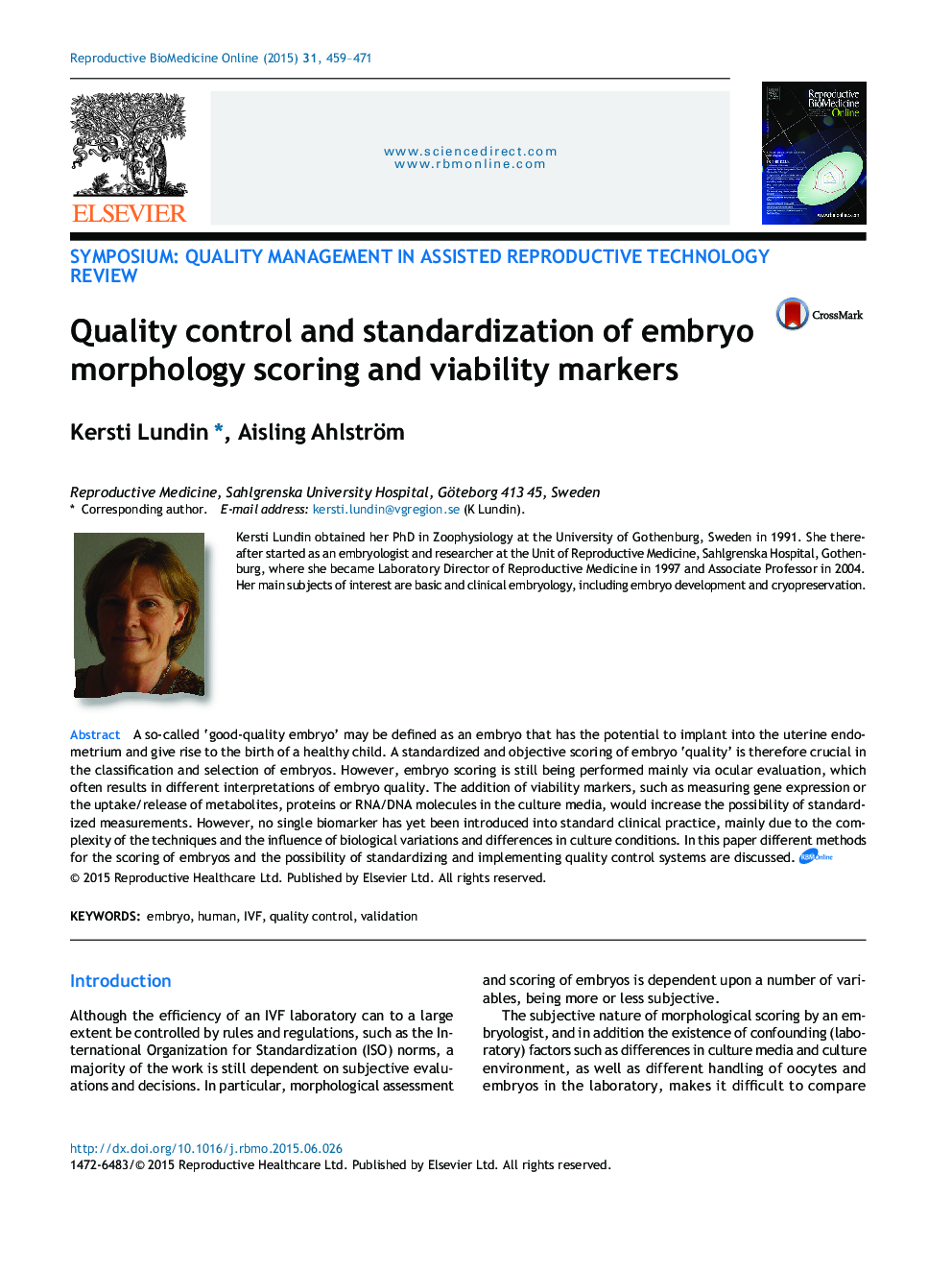| Article ID | Journal | Published Year | Pages | File Type |
|---|---|---|---|---|
| 6188591 | Reproductive BioMedicine Online | 2015 | 13 Pages |
A so-called 'good-quality embryo' may be defined as an embryo that has the potential to implant into the uterine endometrium and give rise to the birth of a healthy child. A standardized and objective scoring of embryo 'quality' is therefore crucial in the classification and selection of embryos. However, embryo scoring is still being performed mainly via ocular evaluation, which often results in different interpretations of embryo quality. The addition of viability markers, such as measuring gene expression or the uptake/release of metabolites, proteins or RNA/DNA molecules in the culture media, would increase the possibility of standardized measurements. However, no single biomarker has yet been introduced into standard clinical practice, mainly due to the complexity of the techniques and the influence of biological variations and differences in culture conditions. In this paper different methods for the scoring of embryos and the possibility of standardizing and implementing quality control systems are discussed.
